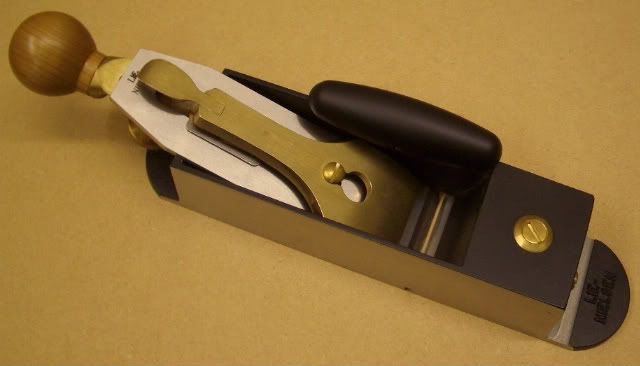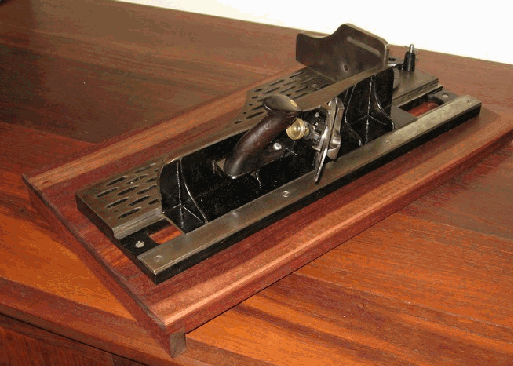I have known about this for a few years - that does not say much, just that Tom LN mentioned it to me and one important design detail, this being that the frog would be taken from a #6 and not replicate the original Stanley design. For those familiar with the workings of the Stanley #51, this is a Big improvement. The original frog is/was fragile and many broke owing to the stresses placed upon it when shooting endgrain. My own #51 has a welded frog. The plane works perfectly, but it is a constant reminder that this area is a weakness. The #51 frog is unique to this plane, so there are no parts available.
The #51/52 is a step up from everything else.
The advantage of the tracked #52 is that all one has to do is push the plane forward. You do not have be be concerned abouthe plane's desire for lateral movement, and this leads to a far less fatiguing involvement.
There is greater repeatibility in the set up. Plus the adjustable fence - variable between 45 and 90 degrees - is super accurate at the extreme stops.
The #51 is a heavy plane, so carries a good deal of momentum through the cuts. This is important on end grain, which is always tough to cut. The skew blade serves to lower the angle of entry, keeping in mind that the blade is set up at 45 degrees and bevel down.
The angle of the handle may look cumbersome, but it is perfectly placed and angled for a comfortable grip and ergonomic stance.
I have a Japanese Smoothcut blade along with a heavy Clifton cap iron, and this combination is excellent.
Regards from Perth
Derek



































